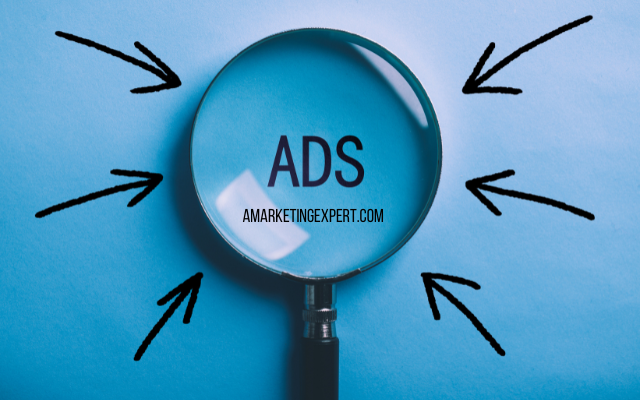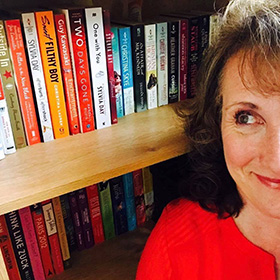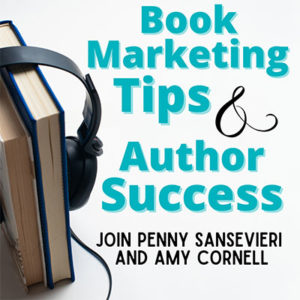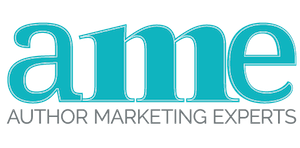We’re all clamoring for more exposure for our books. The market can be rough and getting more visibility on Amazon is, for most authors, an ongoing challenge. Enter: Amazon ads for books.
And if you’re like most authors who have already dipped their toes into ads, you may not be seeing the kind of success you were hoping for, so I’m going to break down how to manage your ads better, and how to view your ads differently.
The Long-Term Goal for Amazon Ads
Amazon wants to compete with Google in terms of ads, which is why there are some distinct similarities. But it’s not necessary to know anything about the Google Adwords dashboard in order to understand Amazon ads. The reason I mention it is because Amazon has lofty goals. Their long-term plan is to have Amazon ads show up in Google searches. Meaning, they’ll compete with the Google ads you see now. I’ve already seen them experiment with this, so the rollout of this plan probably isn’t too far away. Will this be free to authors? I doubt it. As with anything under the ads umbrella, it will be a pay-to-play situation.
So why is it important to know this? Because the sooner you get into Amazon ads, the better. And at some point, I feel like the whole ads experience may change in terms of the cost and right now, it’s hard to get Amazon to spend your money, but that won’t always be the case.
What Amazon Ads Do for You
With over 8,200 books published each day, it’s often challenging to get Amazon to present your book once, let alone multiple times. And if you’re in a very busy category, like genre fiction, this gets particularly tricky. But Amazon ads allow you to “show” your book to prospective readers – remember, in the Amazon ads system you don’t pay for impressions, just clicks, which means that your book can get in front of lots of readers – for free.
Then there’s the optimization piece. We do a lot of optimization for authors, it’s been the cornerstone of our client work for years. And optimization, done correctly, is fantastic, but when you layer the Amazon ads exposure on top of that, it’s pretty amazing.
Amazon Ad Reporting
What mystifies me the most about Amazon ads for books is their reporting, which is, frankly, pretty lackluster. They don’t start to “catch up” on sales until your ad has been running for a week or more, meaning that if you’re watching your ad sales starting on day 1, you’re going to be seriously disappointed because it will take Amazon a while to catch up.
What I recommend is, before you start your ads campaign, keep an eye on your overall sales, either via the KDP dashboard or wherever you can see your book sales.
That will give you a much more accurate view of how well your book is doing. The other reason for this is what I mentioned above: impressions. And sometimes you may make a sale (or several) because a reader saw your ad a few times but maybe didn’t click on it right away. So, for example, let’s say a potential buyer sees your ad, maybe a couple of times, and thinks: this book looks interesting. But doesn’t get it right away because they have a few books on their TBR list. Then that same reader sees your book in a search result a month later, not related to your ads, and remembers they were interested and clicks through to buy it. The important thing to note here is that you made a sale. The ads were critical in staying top of mind, but that sale won’t show up as an ad sale on your dashboard.
In marketing, there’s the old saying that it takes seven impressions to make a sale, and that’s where the multiple levels of exposure come in, and also why I love the ads but caution authors not to act like stock market junkies watching their bottom line. Also, ACoS (advertising cost of sales) calculates the retail price of your book, not what you get paid – which again, makes it a terrible assessment of how your ads are doing.
Amazon Ad Budgeting
So how much should you spend to get noticed?
The short answer is: I don’t know.
But the longer answer is: be careful of really high-bid keywords, like ones that cost $34 a click (yes, that’s a thing).
Each book and market/audience combination is unique, so what one of my clients needs to spend to compete could be entirely different from another client.
Just be mindful of overbidding on keywords, and remember there’s nothing wrong with bidding on the lower end of the scale. You can always go up, but you can’t get your ad dollars back once they’re spent.
And remember that you’ll always spend more when your ads are new. That’s because Amazon is getting to know your book and who’s interested. As you continue to refine your keywords and narrow the lane, so to speak, your ad spend will drop considerably.
Amazon Ad Troubleshooting
If you’ve read this far and you’re still ready to give Amazon ads a try, or maybe you’re running them already without much success, let’s dig into some common issues.
You don’t have enough keywords.
Starting an ad set with a handful of keywords won’t get you very far. You’ll need to start your ads with at least 100 but preferably 300 keywords.
You’re using the wrong keywords.
You may think that your book belongs in a certain category, or keyword set, but does it really? Authors tend to overshoot where their book belongs. You’re better of narrowing your focus and really zeroing in on your reader, both from a sales standpoint and from an analysis standpoint.
You’re running too many ads.
Running lots of ads does not help you monopolize the Amazon ecosystem; it just gets you to the point where you’re literally bidding against yourself. Which is never a great way to run an ad set.
Your book’s metadata isn’t optimized correctly.
I see this with authors who run automatic ads on Amazon. The ads don’t do well because the book’s metadata isn’t optimized correctly. Meaning Amazon either won’t show it or can’t find it because it doesn’t make sense for the targeting you’re doing.
Your retail page isn’t converting.
Similar to the optimization point I made above, if your book’s retail page is lackluster, your book description isn’t good, you have few, if any reviews, your ads won’t perform as well. Amazon wants to sell books, and if you’re not making a good impression with shoppers they’ll know it.
Amazon Ad Conversions
I mentioned that impressions were free on Amazon, and that’s great. But you also want those impressions to convert to a buy.
If you have high impressions and a low CTR (click-through rate) Amazon will, at some point, stop showing your ads. So be mindful that while impressions are awesome, impressions without clicks aren’t getting you very far.
So while creating and managing Amazon ads for books can seem complex (because there are so many moving parts) the benefits of ads are worth it in terms of organic optimization and creating multiple pathways to your retail page.
But remember! At the end of the day, your book sells your book. Be sure your retail page is solid and you’re sending the right shoppers to your book.
Resources and Free Downloads
Listen: Navigating the unexpected & what authors need to prepare for.
Simple strategies used by one author to sell 20K books.
What to know before hiring a book marketing firm.
Listen: How launching a book is like starting a business.
5 Questions to ask a book publicist before hiring them.
How to get more publicity for you and your book.
How to sell your non-fiction title in the age of free information.
Check out all the episodes of our book promotion podcast anywhere you listen to podcasts!
Definitely follow us on Instagram for book marketing tips and some much-needed levity!





0 Comments